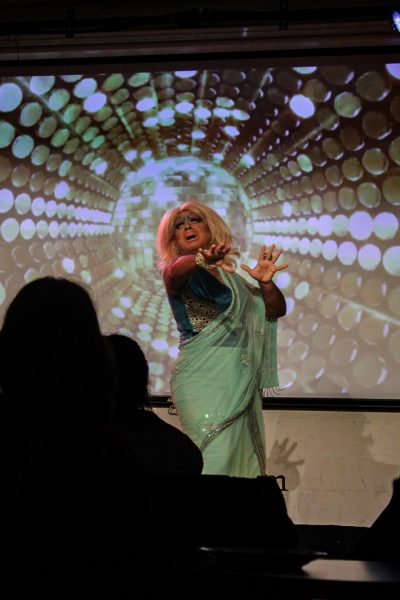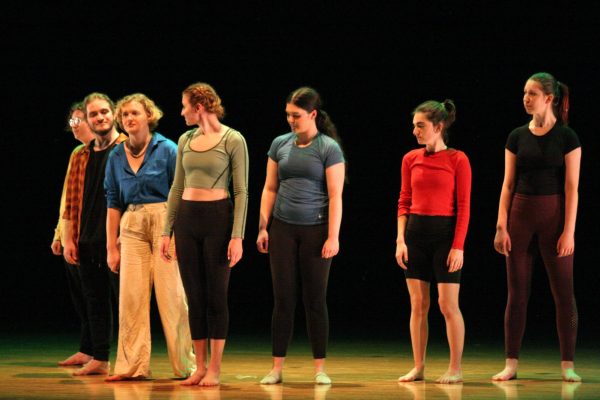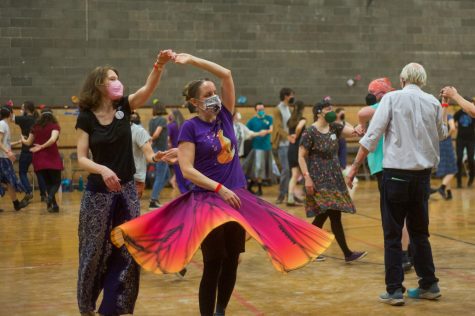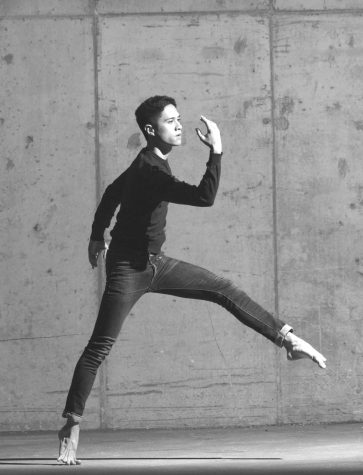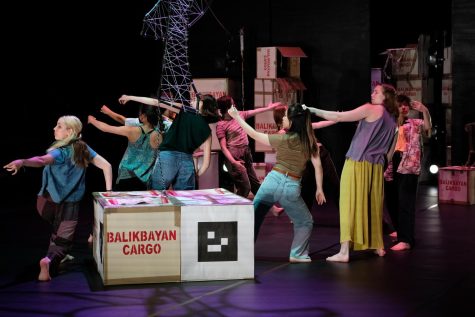Navigating Dance at Oberlin Outside of Academic Spaces
There are over 17 student-led dance groups at Oberlin, including troupes like VIBE Dance Company, Kinetik Hip Hop Crew, AndWhat?!, Capoeira Angola, and more. That’s not to mention that Fall Forward and Student Showcase: Dance Umbrella are coming up. These groups offer a diverse spectrum of dance styles and many opportunities for those interested in dance to get involved.
Yet despite the large number of groups, there are far more students wanting to get involved in dance on campus than already participating in dance classes or clubs.
By virtue of being a conservatory school, Oberlin tends to position music in higher demand than the other performance arts. The extensive access to music performances, classes, and practice rooms makes dance and other performance art seem insignificant in comparison. There aren’t many dance studios, and we aren’t a school recognized for dance. Although Oberlin does have a Dance department and many student organizations and clubs, some students feel unable to explore their identities as dancers.
In terms of academic dance spaces and class structure, there seems to be exclusivity among Dance majors. This is not necessarily a bad thing. Students who spend the majority of their time together in classes are bound to have closer connections, and cliques are created regardless of the intentions of these artistic spaces. There is also an academic culture surrounding dance. A non-dance major looking to participate in dance may be discouraged by the idea that if they’re not pursuing dance academically, they can’t be that serious about it.
“The fact that I’m not a Dance major or minor, but am still a dancer, is baffling to some people,” Sophia Steckler, a College third-year trained in classical Indian dance, said. “If you’re not a Dance major or minor, you’re not a dancer to them.”
Some dance classes and organizations do not require prior experience, yet students with limited dance experience sometimes feel left behind or lost.
“I think at times, there is kind of an expectation or divide in most of the dance classes,” Steckler said. “Even though it’s open to everyone, you still need some basic understanding of dance technique depending on the style: jazz, improvisation, whatever.”
This perceived lack of opportunities doesn’t come from an actual absence of resources in the form of clubs, classes, or organizations. It comes from a perceived monopoly over claiming the dancer identity. The opportunities to get involved in dance on campus do not negate the work one must do to break into these groups — especially when, before arriving at Oberlin, one has already dedicated a significant amount of time to a craft and built a community elsewhere.
“I’m a classical Indian dancer … [and] at home I would do it multiple times a week,” Steckler said. “I live near my dance studio and my dance teachers, so I felt very connected to them through being in the physical space together. Here, I still take dance classes, but it’s still very different. I consider myself a dancer, but I don’t go to a dance class for the majority of the year, so do I call myself a dancer? I’m not even dancing, I’m not even practicing my technique even once a week.”
As a beginner dancer, the desire to join a dance space is fueled by the eagerness to learn dance, whatever style it may be. However, when one is an established dancer, the appeal becomes less about learning and more about building community. Oberlin and other academic institutions should consciously create spaces where the people dancing are valued as much as dance itself, and where talents are respected outside of academic settings.






